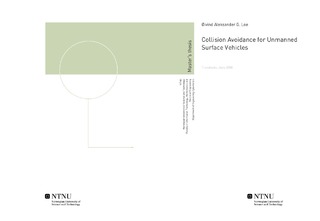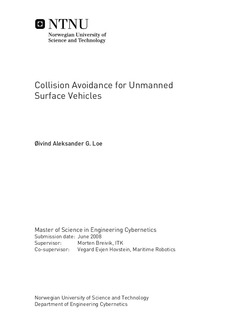| dc.description.abstract | Considerable progress has been achieved in recent years with respect to autonomous vehicles. A good example is the DARPA Grand Challenge, a competition for autonomous ground vehicles. None of the competing vehicles managed to complete the challenge in 2004, but returning in 2005, a total of five vehicles were successful. Effective collision avoidance is a requirement for autonomous navigation, and even though much progress has been done, it still remains an open problem. The focus of this thesis is on the development of a collision avoidance system for unmanned surface vehicles (USVs), which is compliant with the International Regulations for Avoiding Collisions at Sea (COLREGS). The system is based on a modified version of the Dynamic Window algorithm, taking both acceleration and lateral speeds into account for reactive collision avoidance. Path planning is provided by the Rapidly-Exploring Random Tree (RRT) algorithm, extended to use the A* algorithm as a guide, which significantly increases its efficiency. Extensive simulations have been performed in order to determine the value of the modifications done to the original algorithms, as well as the performance of the total control system. Full-scale experiments have also been carried out in an attempt to verify the results from the simulations. The collision avoidance system performed very well during the simulations, finding near-optimal paths through the environment and evading other vessels in a COLREGS-compliant fashion. In the full-scale experiments, important sensor data was erroneous, resulting in reduced avoidance margins. However, the collision avoidance system still kept the controlled vessel safe, showing significant robustness. | nb_NO |

